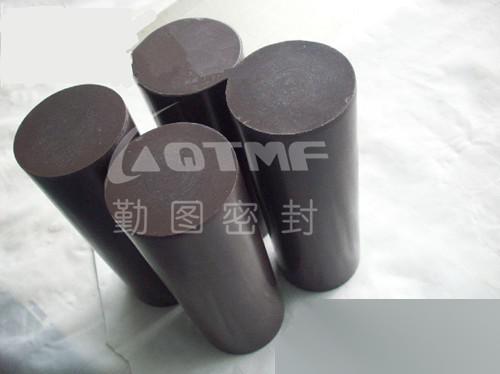Polyphenylene is a new type of polymer material with many excellent properties. Polyphenylene is burned in a high-temperature furnace, starting to decompose at 530 degrees Celsius, with no melting point and a slight weight loss phenomenon under long-term heating at 450℃. It is resistant to chemical corrosion, and so far, no solvent has been found that can dissolve polyphenylene. It also has excellent self-lubricating properties, superior to molybdenum disulfide and graphite.
(1) Technical Specifications:
1. Appearance: Brown-red or dark brown powder
2. Fineness: <200 mesh
3. Thermal weight loss: 400℃, 0.5h ≤4%
(2) Main Applications:
1. Preparation of high-temperature ion exchange resins
2. Production of materials for organic semiconductors and photoconductors
3. Manufacture of high-temperature lubricants and lubricant additives
4. Used as a filler for high-temperature, corrosion-resistant, radiation-resistant, and wear-resistant polyphenylene
5. As a stabilizer for photothermal applications and an oxidant inhibitor.
Introduction to Poly(tetrafluoroethylene)-filled Polyphenylene (PPL) Products:
I. Global Research, Production, and Application Dynamics of "Polyphenylene".
“Polyphenylene” was first successfully synthesized in the laboratory in the United States by KOVIC in 1963.
Subsequently, research and formal industrial applications were carried out in countries such as the UK, the Soviet Union, Japan, Poland, Canada, France, West Germany, and Israel.
II. The China Chemical Industry Research Institute is commissioned by the Ministry of Second Machinery to develop and produce this material.
Over the years, practical applications in various industries across the country have demonstrated its performance, which is significantly superior to that of polytetrafluoroethylene products, with a service life increased by 3 to 4 times, making it an ideal wear-resistant and sealing material in industries such as metallurgy, chemical engineering, fertilizers, printing and dyeing, machinery, papermaking, textiles, and light industry.
To date, the "Polyphenylene Engineering Plastic" produced by our factory is a domestic innovation.
III. Overview of "Polyphenylene Engineering Plastic" Performance.
(1) Polyphenylene, also known as polyphenylene sulfide, is a polymer linked by rings.
Polyphenylene has good high-temperature resistance and can be used for rocket engine components and navigation;
It has good thermal stability and can be used to make high-temperature bearing materials;
It has good corrosion resistance and can be used as bearings and chemical equipment in corrosive environments and harsh working conditions;
Its self-lubricating properties are superior to those of molybdenum disulfide and graphite, making it suitable for the production of oil-free lubricating seals, packing, piston rings, etc.;
Due to its high rigidity and regularity, the molecular chain of polyphenylene makes it insoluble and difficult to process, necessitating the blending with other materials.
Blending polyphenylene with polytetrafluoroethylene produces piston rings, rubber and plastic tracks, sealing bushings, packing, etc., which are used in chemical, light industry, textile, printing and dyeing, and machinery industries, achieving good results.
(2) High-temperature performance: The "poly" powder begins to decompose at 520℃ in a high-temperature furnace, has no melting point, and shows slight weight loss under long-term heating at 450℃, making it an engineering plastic suitable for long-term use below 400℃.
(3) Radiation resistance: Under cobalt-60 (Co60) irradiation, it can withstand 9*10^6 rads without performance change.
(4) Chemical corrosion resistance and solvent resistance: So far, no solvent has been found that can dissolve polyphenylene, and strong acids and strong bases, such as hydrofluoric acid, cannot corrode it.
(5) Electrical properties: Volume resistivity is 10^15 ohm-centimeter; under different polymerization conditions, it can also act as an organic semiconductor with a volume resistivity of 10^17 ohm-centimeter.
(6) Self-lubricating properties: It has excellent self-lubricating properties, greatly superior to molybdenum disulfide and graphite or other filled polytetrafluoroethylene products.













